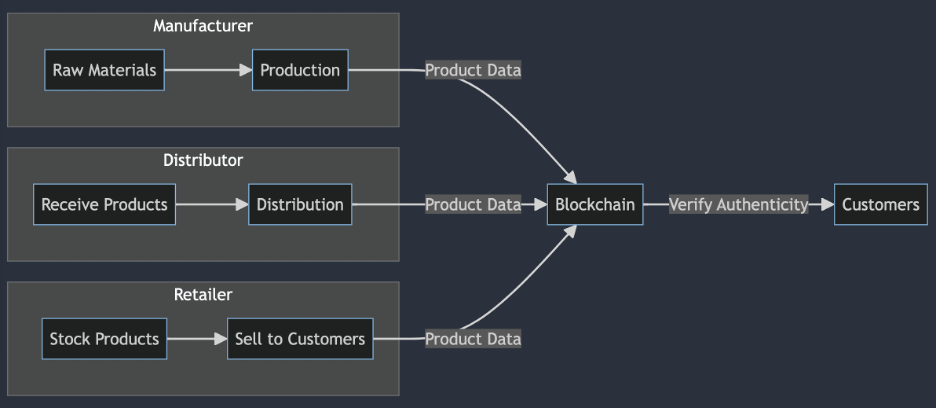Blockchain technology is revolutionizing the way we conduct business by providing transparency, security, and immutability to data. AWS Managed Blockchain, a fully managed service from Amazon Web Services, makes it easy to create and manage blockchain networks. In this blog post, we will discuss how to set up and configure a blockchain network using AWS Managed Blockchain, and explore its applications in supply chain management, financial services, and more.
Setting up an AWS Managed Blockchain Network
Step 1: Creating a Network
To get started with AWS Managed Blockchain, log in to your AWS Management Console. Navigate to the Managed Blockchain service and choose “Create network.” Select the blockchain framework that suits your needs, such as Hyperledger Fabric or Ethereum.
Here’s a sample AWS CloudFormation template for creating a Hyperledger Fabric network:
{
"AWSTemplateFormatVersion": "2010-09-09",
"Description": "Create a Hyperledger Fabric network on AWS Managed Blockchain",
"Resources": {
"MyNetwork": {
"Type": "AWS::ManagedBlockchain::Network",
"Properties": {
"Name": "MyBlockchainNetwork",
"Framework": "HYPERLEDGER_FABRIC",
"FrameworkConfiguration": {
"Fabric": {
"Edition": "1.4",
"AdminPassword": "MySecurePassword"
}
}
}
}
}
}
Step 2: Network Configuration
Configure your network by specifying the number of members and the desired configuration, including the voting policy and the number of nodes. AWS Managed Blockchain handles the underlying infrastructure, making it simple to create and manage a blockchain network.
Step 3: Member Creation
After creating the network, you can add members to it. Each member represents a participant in the blockchain network. Members can be external organizations or AWS accounts. Invite members and set their voting policies to control access to the network.
Step 4: Node Configuration
Now, it’s time to configure the blockchain nodes. AWS Managed Blockchain automatically provisions nodes according to your network’s specifications. You can also use AWS CloudFormation templates to customize node configurations further.
Here’s a sample AWS CloudFormation template for defining a Fabric member node:
{
"AWSTemplateFormatVersion": "2010-09-09",
"Resources": {
"MyNode": {
"Type": "AWS::ManagedBlockchain::Member",
"Properties": {
"NetworkId": "MyNetworkId",
"Name": "MyMemberNode",
"MemberConfiguration": {
"Fabric": {
"AdminPassword": "MySecurePassword"
}
}
}
}
}
}
Step 5: Deployment
Once you’ve configured the network and added members, AWS Managed Blockchain will deploy the blockchain and start generating the necessary certificates. Your network will be up and running in no time.
Applications in Supply Chain Management
Blockchain technology is a game-changer in supply chain management, providing a transparent and tamper-proof ledger. By integrating AWS Managed Blockchain into your supply chain, you can:
- Track Products: Each product can have a unique blockchain record, allowing you to track its journey from manufacturer to consumer.
- Verify Authenticity: Prevent counterfeit products by verifying their authenticity on the blockchain.
- Automate Processes: Smart contracts can automate payment transfers and other processes, reducing errors and delays.
Diagram illustrating a simplified supply chain process on a blockchain network:

Applications in Financial Services
The financial industry benefits from the security and transparency of blockchain. With AWS Managed Blockchain, you can:
- Trade Securities: Blockchain simplifies securities trading, reducing the risk of fraud and errors.
- Settle Payments: Make cross-border payments faster and more secure with blockchain technology.
- Audit Trails: Maintain immutable audit trails to ensure compliance with financial regulations.
pragma solidity ^0.8.0;
contract PaymentContract {
address public payer;
address public payee;
uint public amount;
constructor(address _payee, uint _amount) {
payer = msg.sender;
payee = _payee;
amount = _amount;
}
function confirmPayment() public {
require(msg.sender == payee, "Only the payee can confirm payment.");
// Transfer funds to the payee
payable(payee).transfer(amount);
}
}
Conclusion
AWS Managed Blockchain simplifies the process of setting up and managing blockchain networks, making it accessible to businesses of all sizes. Whether you’re in supply chain management, financial services, or any other industry, integrating blockchain technology can enhance transparency, security, and efficiency.
With the sample code provided in the AWS documentation and diagrams to illustrate your network’s architecture and processes, you can get started quickly and effectively. Incorporating blockchain technology into your business processes with AWS Managed Blockchain can lead to improved trust, reduced fraud, and increased efficiency, making it a compelling choice for modern businesses.

